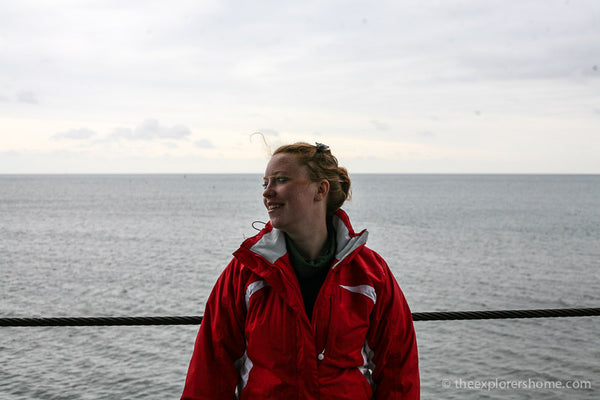- Continue Shopping
- Your Cart is Empty
How To Stay Warm And Dry When The Weather Turns Against You

Those that are accustomed to the weather in the British Isles wouldn't exactly describe it as sunny or warm. Some would even go so far as to say that we have no summers at all and that perpetual rain and wind are the norm here! We love it for what it is though and, as a great man once said: 'There is no such thing as bad weather, just poor kit choices.' So, without further ado, we are going to talk about those great kit choices and what you can do to keep yourself dry and warm when the weather turns wet and miserable.
The key to keeping warm and dry in the great outdoors is known as the layering system. Wearing multiple thin layers will keep you much warmer than one very thick layer. It also allows much more flexibility when it comes to managing your temperature when you are out in the elements. It is much more comfortable to remove a jumper and put on a thin waterproof layer, should it be raining in the summer, than to wear a big and bulky jacket. The layering system can be broken up into four broad categories, which are…
Base Layer
The base layer is designed to sit comfortably next to the skin. Traditionally base layers have been created from Merino wool. Merino is an extremely fine wool fabric which has excellent wicking properties, meaning that it draws sweat away from the skin and so keeping you dry. Being wool, the merino also keeps the thin layer next to your skin very warm. There are a number of synthetic alternatives on the market which offer an excellent price to performance ratio and are designed to pack up extremely small for when you need to just throw them in your bag overnight.
Mid Layer
The mid layer, or warmth layer or soft shell layer, as it is sometimes described, is primarily here to provide the warmth insulation that you might need. Coupled with the base layer, it works in tandem by trapping further heat inside the layer and also wicking moisture vapour away from your base layer, keeping you dry. Some of the better mid layers also offer an element of being water resistant, meaning you only have to pull out the waterproofs when the weather really turns bad.
An excellent choice for mid-layers is a fleece type material. You will want to choose your fleece layer wisely, depending on your activity. If you are mountain climbing, you will likely want an active fleece layer which is not designed to be so thick. However if you are lounging about camp or just having a stroll with the dogs, you may want a thicker passive fleece layer. Target Dry offer an excellent choice for both a thinner layer with their new Atomic women's fleece and a water and rain resistant option with their new Gravity women's waterproof fleece. The rain resistant option is great for when you want to shave off that extra weight on a long hike.
Definitely don't forget the legs as well. TargetDry offer a great pair of thermal trousers for those cold days which will combat the chill on a winters morning.
Shell Layer
The Shell layer, or waterproof layer, is the top most protection that you will wear. This layer is specifically designed to keep you dry and to protect you from the wind. This layer is often designed from two types of material:
Membrane - this is the likes of GoreTex, Pertex and others of similar design.
Coated Nylon - this is generally lighter and cheaper but not as breathable.
The shell layer is designed solely to keep you dry and out of the wind. This is the layer that you want to turn to when the heavens open (as is often the case here!) and the rain starts. It is important to remember to pack a shell layer no matter what the weather, especially when you are planning on an overnight trip. Being in wet clothing can be very dangerous, hypothermia can set in quickly and in surprisingly milk weather, especially if you have been sweating during the day as well. Be safe, especially for the sake of a few extra grams. Some excellent options for shell layers are the new Atlas Men's waterproof technical jacket and the Pioneer men's over trousers.
Fine tuning
It is always important to protect your extremities. Even on hot days, at altitude the wind can be bitterly cold, especially when blowing around fingers and ears! It is always a good idea to pack some gloves and a hat, even in the summer. The hat can then double up whilst you are asleep in your sleeping bag to protect your head at night. Winner!
Fabrics to avoid
The one fabric to avoid when out walking and camping is cotton and its derivatives - denim and other similar garments. Cotton soaks up water and sweat and retains that moisture, taking a long time to dry. This can be extremely dangerous when out on longer expeditions as when garments are wet for prolonged periods, especially when next to the skin, there is a much greater risk of developing hypothermia. This includes avoiding cotton underwear and socks, which are prime culprits! Always aim for a wicking, fast drying material as detailed above, for when you want to be warm, comfortable and safe when out enjoying the beautiful countryside.




Vaughan William
Author